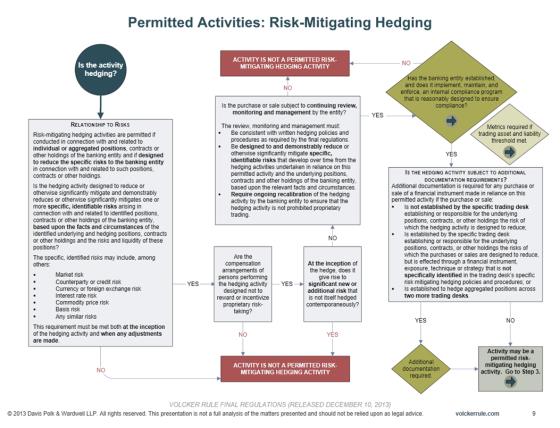
How is Goldman able to trade such large commodity positions in the Dodd-Frank world?
The way that I understand the trade: Goldman marketing/origination (J. Aron) was (1.) buying physical gas at HH minus ~$0,30 receiving the local index, giving the HH index to the Marcellus Basin producers and (2) selling physical gas to power plants receiving the HH index ± X premium.
But it seems that the trader didn't hedged away its spread risk related to a widening of the Marcellus/HH differential or perhaps didn't mitigated the resulting mismatch because felt this had a lot of upside*.
Meanwhile this spread widened from $0,30/mmbtu to $1.15/mmbtu as Energy Transfer's Rover project ran into delays.
So how is Goldman able to trade such large commodity positions in the Dodd-Frank world? Why is the Volcker rule not working?-I am not convinced it's a such large commodity positions- It's rather one by DV01 amplitude.
With respect to the Volcker Rule, at the inception, Goldman Sachs was legitimately engaged in hedging real client's exposure on commodity price and basis risk in natural gas. It was a permissible activity under the Volcker Rule no question.
Ironically, Goldman lost money by doing what it was supposed to do,taking the risks off the producers' hook.
*The point of contention however is the compensation arrangements of the persons performing the hedging activity designed to reward or incentivize proprietary risk-taking ?
Volcker Rule briefer,
Under Basel, the risk-based capital requirements are expressed as capital ratios that compare measures of regulatory capital to risk-weighted assets.
The current minimum of total capital to risk-weighted assets is 11.1%. Pillar 3 complements these minimum risk-based capital requirement (Pillar 1) and the supervisory review process (Pillar 2). It aims to promote market discipline by providing meaningful regulatory information to investors and other interested parties on a consistent and comparable basis.
The Federal Reserve Board risk-based regulations guideline is largely based on Pillar 3. Additionally, the board is also implementing certain provisions based on its interpretation of Dodd Frank.
Goldman Sachs FICC's primary role is market-making, using the firm capital to buy and sell fixed income, currency or commodities to its clients but unlike other commodity traders, Goldman Sachs capital is risk-regulated.
Goldman probably trade less / takes less risks than it wishes it could-Commodity Assets are limited to 5 percent of the firm total consolidated assets as per Section 4(o) of the BHC Act.
In return, GS is FDIC-insured, preserves its access to the Federal reserve's discount window and attract capital.
Did a risk manager closed the eyes and was a gas trader let outright because wanted to take away $50M ?
Goldman Sachs belongs to the investment banking school of commodity trading, which is based upon a risk point of view. You can assert with a confidence interval that Goldman doesn't trade outright, offset both its physical and spread risk locking in a profit margin.
In my example, the profit margin is $0.11/mmtbtu (-0.10+0.05+0.30+.15) minus 0.29 transport costs.
As a derivatives trader might intuitively suggest, one would think the worst case scenario and buy options (puts) on the basis swap to lock the risk. However, this supposition, I fear, cannot be translated the real world because the call-option is rather the pipeline capacity itself. Hence, the risk-profile in these pipelines deals is asymmetrical.
A risk manager would ensure that any of its traders would have systemically an acceptable hedge otherwise losses are ad infinitum. But what acceptable form of hedge ?-
In both the most elementary cash and carry trades or the more complexed transactions, risks are too often 'assumed understood' by traders.
I don't mean this as an opprobrium; the risk dimensions in physical trading baffle me too.
In fact, I get the strong sense that they baffled the people at Goldman who were actually doing these transactions… which is maybe the only way to explain how they happened and how it costs Goldman Sachs $100M…(opsss).
Simon Jacques, Structurer

Legal Disclaimer:
MENAFN provides the
information “as is” without warranty of any kind. We do not accept
any responsibility or liability for the accuracy, content, images,
videos, licenses, completeness, legality, or reliability of the information
contained in this article. If you have any complaints or copyright
issues related to this article, kindly contact the provider above.


















Comments
No comment